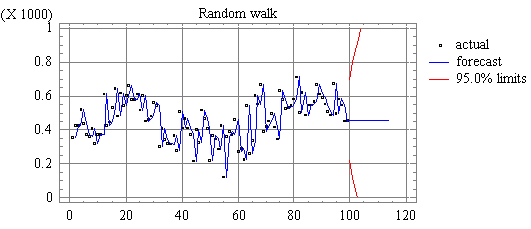Introduction to Simple and exponential moving average (EMA) forecasting model and calculation
Post on: 16 Март, 2015 No Comment

Introduction to Simple and exponential moving average (EMA) forecasting model and calculation
In our last lesson we gave an introduction to technical analysis, which started our latest series of lessons on how to use these in your trading. In this lesson we are going to start with looking at one of the most popular technical indicators, the moving average.
Exponential moving average and simple moving average
There are several different types of moving averages. which we are going to explore here, all of which are used by traders to try and smooth out the price action of a financial instrument, and get a better feel for the longer term direction without all the noise that is often associated with just looking at the price. In addition to getting a better feel for the longer term trend of a financial instrument, moving averages are also used to spot potential support and resistance levels, and are often used in conjunction with one another to generate buy and sell signals.
Before we get into the details however, lets first have an overview of the two main types of moving averages: the simple moving average and the exponential moving average.
The Simple Moving Average Model
The simple moving average is the most basic of the moving averages and is calculated by taking the past x number of points averaging them, and then plotting the resulting line on a chart. The reason it is called a moving average is because as new data points become available the average moves forward to incorporate the new data point and drops the last data point in the series.
For example, if a trader plots a 10 day moving average on a chart the last 10 days of trading are averaged to come up with the most recent point plotted on the moving average line on the chart. On the next day of trading the data point, which occupied the first day used in the above moving average is dropped from the equation, the data point which was day two in the equation becomes day 1, and the next day of trading becomes the 10th data point in the equation.
Here is what a Simple Moving average Looks like on a Chart:
Data Point 2
I included this example here so you can simply have a basic understanding of how the average is calculated, however any charting package which you use should automatically do the calculations for you.
The Exponential Moving Average (EMA) :
Critics of the simple moving average argue that it is too simple in the sense that it gives the same weight to each point in moving average calculation. The problem with this it is argued is that the more recent data points deserve a greater weighting in the formula as they are more relevant to the future price action of the instrument.
To solve this problem traders came up with the exponential moving average . which gives more weight to the more recent price points in calculating the moving average line. Whatever chart package that you end up using should automatically calculate the exponential moving average for you but for those who want to know the formula for doing so is below:
Exponential Moving Average Calculation
When the simple moving average and the exponential moving average are plotted together on a chart you can see that the exponential average reacts faster to the most recent price action.
Example Comparing EMA with SMA:
Moving averages can be created from any number of trading periods however the most commonly used are the 200 day moving average and the 50 day moving average followed by the 15, 20, and 100 day moving averages.
Whether traders use the simple or exponential moving average normally depends on trading style and the financial instrument that one is trading. As the simple moving average is slower to react than the EMA. traders will often use the SMA for trading longer term moves and EMAs for shorter term moves. Traders will often look at how different financial instruments have reacted in the past using both types of moving averages and then pick the one that has best represented the types of moves they are trying to trade. Lastly, some traders are firm believers in price and volume, and do not use any technical indicators in their trading.
This completes our lesson for today. You should now have a good understanding of moving averages and the difference between a simple and an exponential moving average. In tomorrows lesson we will look at some different ways that traders use moving averages in their trading so we hope to see you in that lesson.
As always if you have any questions or comments please leave them in the comments section below so we can all learn to trade together, and good luck with your trading!
Links to Help You Learn About Moving Averages














